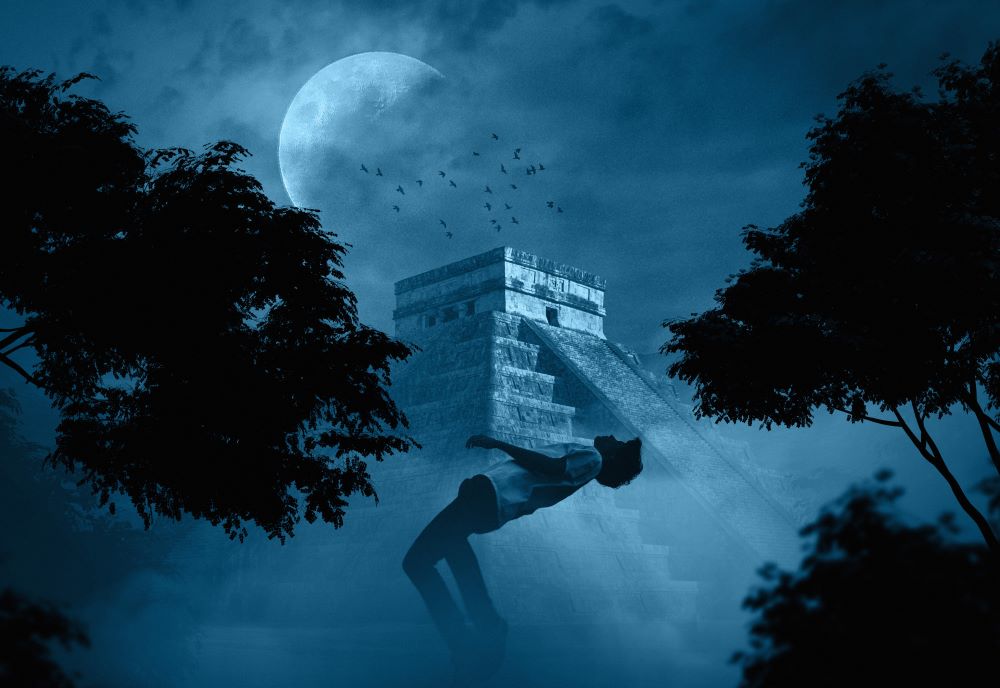OU News
News from The Open University
- Home
- Five vampire books to read if you enjoyed the film Nosferatu
Five vampire books to read if you enjoyed the film Nosferatu
Posted on • Arts, Arts and social sciences

Oscar-nominated film Nosferatu has rekindled the love of all things spooky in this new version of the 1922 classic that manages to mix elements of Frankenstein and The Exorcist (1973), deftly demonstrating that vampire films can go in new directions.
So too can these five contemporary vampire novels, which play with conventions as well as updating the mythology of vampires in places. So, if that’s your literary poison, Anactoria Clarke, Staff Tutor and Lecturer in English Literature, has chosen these five books to get your fangs into:
1. Certain Dark Things (by Silvia Moreno-Garcia, 2021, Jo Fletcher Books)
This novel places its action in Mexico City and reinvents vampire folklore by having its bird-like vampire protagonist, Atl, derived from Aztec mythology known as the Tlāhuihpochtli [pronounced Ta-whoeepoch-tli].
The writer also gives her vampires new problems, such as arithmomania (you can stop the vampire by throwing a bag of rice at it, as it needs to stop and count – they are obsessive-compulsive hoarders, in Moreno-Garcia’s world).
The vampire and her ‘familiar’ – a street kid called Domingo – fight to free her of the drug-dealing vampire gangs, becoming close in the process, with Atl having to make a tough choice at the end. Touching upon class and colonialism, it’s a gritty thriller with the widest variety of vampire types that I’ve encountered.
2. Fledgling (by Octavia E. Butler, 2022, Headline Publishing Group)
First published in 2005, this story flies under the radar, as has most of Butler’s work during her lifetime, although it is currently enjoying great popularity. Shori is the vampire protagonist who comes from a matrilineal line of vampires but is herself an experiment in genetic engineering to make her kind less vulnerable.
Her kind, the Ina, live in communities with their symbiotic human companions, and the novel unfolds with Shori and her clan fighting within the vampire code of law to put an end to interclan fighting. Butler reimagines vampire mythology to make a space for vampires of colour and of morality.
3. Thirst (by Marina Yuszczuk, 2024, Scribe)
Set in the Argentinean city of Buenos Aires, a more traditional female vampire figure has travelled from Europe and finds herself increasingly isolated in the new world. She takes to her coffin to live out her immortality in hibernation.
A hundred years later, a woman finds herself in possession of a mysterious key, details about which her dying mother refuses to tell her. When she finds that it fits the lock of a mausoleum in one of the oldest cemeteries in the city, she finds herself repeatedly drawn to the tomb and its inhabitant. This novel is a beautifully melancholic exploration of life, grief, and reimagined beginnings.
4. The Gilda Stories (by Jewelle Gomez, 2023, Vintage Classics)
Originally published in the late 1990s, this is another example of female-authored vampire fiction depicting women of colour enjoying a resurgence.
Gilda is an escaped slave, taken in by two mysterious women, rumoured to be witches. She becomes a vampire, promising to ‘share the blood’, and moves through the next two hundred years enjoying female companionship and friendship.
The novel picks up the heroine at various time periods and explores what it means to be a Black woman, and how she – as a vampire – can help those she loves to survive the hardships of the time.
5. Woman, Eating (by Claire Kohda, 2023, Virago)
A fascinating take on the vampire novel, Kohda’s book takes its heroine, Lydia, a human-demon mix, and explores her struggle for independence and career success.
Having a Japanese father and a Malaysian-British mother already makes her feel divided but the fact that she needs to figure out how to survive on blood without her mother further complicates her quest for identity.
Lydia is an outsider in the human world and the art world, and her attempts to reconcile her needs with the person she wants to be creates a very human narrative.
This novel is both witty and innovative and is a perfect place to start if you prefer your vampire fiction to have slightly less angst and bite.
Main picture by Freepik